One Year Into Our Planet-Hunting TESS Mission
One Year Into Our Planet-Hunting TESS Mission

Our Transiting Exoplanet Survey Satellite (TESS), launched last year on April 18, is completing a year in space, surveying the skies to find the closest, most exciting planets outside our solar system for further study. Worlds that TESS is hunting for include super-Earths, rocky planets, gas giants, and maybe even some Earth-sized planets — and much, much more! TESS is scanning the whole sky one section at a time, monitoring the brightness of stars for periodic dips caused by planets transiting (that is, passing in front of) those stars. So far, TESS has found 548 candidates and 10 confirmed exoplanets.

Since its launch, TESS has orbited Earth a total of 28 times. TESS has a unique elliptical orbit that circuits around Earth twice every time the Moon orbits. This allows TESS’s cameras to monitor each patch of sky continuously for nearly a month at a time. To get into this special orbit, TESS made a series of loops culminating in a lunar gravitational assist, which gave it the final push it needed.

Did you know that TESS has some serious mileage? The spacecraft has traveled about 20 million miles so far, which works out to an average of about 2,200 miles per hour. That’s faster than any roadrunner we’ve ever seen! This would be four times faster than an average jet. You’d get to your destination in no time!

TESS downloads data during its closest approach to Earth about every two weeks. So far, it has returned 12,000 gigabytes of data. That’s as if you streamed about 3,000 movies on Netflix. Get the popcorn ready! If you total all the pixels from every image taken using all four of the TESS cameras — which is about 600 full-frame images per orbit, you’d get about 805 billion pixels. This is like half a million iPhone screens put together!

When the Kepler Space Telescope reached the end of its mission, it passed the planet-finding torch to TESS. Where Kepler's view was deep — looking for planets as far away as 3,000 light-years — TESS's view is wide, surveying nearly the entire sky over two years. Each sector TESS views is 20 times larger than Kepler's field of view.

TESS will continue to survey the sky and is expected to find about 20,000 exoplanets in the two years it'll take to complete a scan of nearly the entire sky. Before TESS, several thousand candidate exoplanets were found, and more than 3,000 of these were confirmed. Some of these exoplanets are expected to range from small, rocky worlds to giant planets, showcasing the diversity of planets in the galaxy.
The TESS mission is led by MIT and came together with the help of many different partners. You can keep up with the latest from the TESS mission by following mission updates and keep track of the number of candidates and confirmed exoplanets.
Make sure to follow us on Tumblr for your regular dose of space: http://nasa.tumblr.com.
More Posts from Nasa and Others
Hi Kate! What did you learn from your Heart Cells experiment? Sounds so interesting!
On Top of The World – Literally
What’s one perk about applying to #BeAnAstronaut? You’re one step closer to being on top of the world.

Part of the job of a NASA astronaut is a task called spacewalking. Spacewalking refers to any time an astronaut gets out of a vehicle while in space; it is performed for many reasons such as completing repairs outside the International Space Station, conducting science experiments and testing new equipment.

Spacewalking can last anywhere from five to eight hours, and for that reason, astronauts’ spacesuits are more like mini-spacecraft than uniforms! Inside spacesuits, astronauts have the oxygen they need to breathe, water to drink and a bathroom!

Spacesuits also protect astronauts from the extreme environment of space. In Earth orbit, conditions can be as cold as minus 250 degrees Fahrenheit. In the sunlight, they can be as hot as 250 degrees. A spacesuit protects astronauts from those extreme temperatures.

To stay safe during spacewalks, astronauts are tethered to the International Space Station. The tethers, like ropes, are hooked to the astronaut and the space station – ensuring the astronaut does not float away into space.

Spacewalking can be a demanding task. Astronauts can burn anywhere from ~1500-2500 calories during one full assignment. That’s about equal to running 2/3 of a marathon.

Does spacewalking sound like something you’d be interested in? If so, you might want to APPLY to #BeAnAstronaut! Applications are open until March 31. Don’t miss your chance to!

Want to learn more about what it takes to be an astronaut? Or, maybe you just want more epic images. Either way, check out nasa.gov/astronauts for all your NASA astronaut needs!
Make sure to follow us on Tumblr for your regular dose of space: http://nasa.tumblr.com
How Do Space Telescopes Break Down Light?
Space telescopes like Hubble and our upcoming James Webb Space Telescope use light not only to create images, but can also break light down into individual colors (or wavelengths). Studying light this way can give us a lot of detail about the object that emitted that light. For example, studying the components of the light from exoplanets can tell us about its atmosphere’s color, chemical makeup, and temperature. How does this work?
Remember the primary colors you learned about in elementary school?
Those colors are known as the pigment or subtractive colors. Every other color is some combination of the primary colors: red, yellow, and blue.

Light also has its own primary colors, and they work in a similar way. These colors are known as additive or light colors.
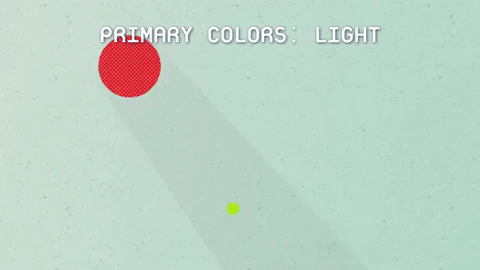
TVs make use of light’s colors to create the pictures we see. Each pixel of a TV screen contains some amount of red, green and blue light. The amount of each light determines the overall color of the pixel. So, each color on the TV comes from a combination of the primary colors of light: red, green and blue.

Space telescope images of celestial objects are also a combination of the colors of light.
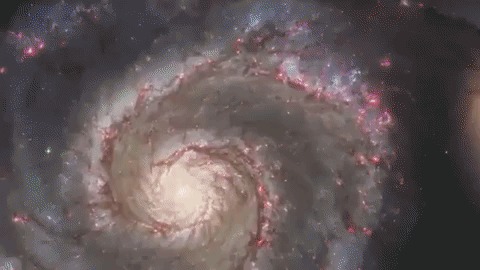
Every pixel that is collected can be broken down into its base colors. To learn even more, astronomers break the red, green and blue light down into even smaller sections called wavelengths.
This breakdown is called a spectrum.
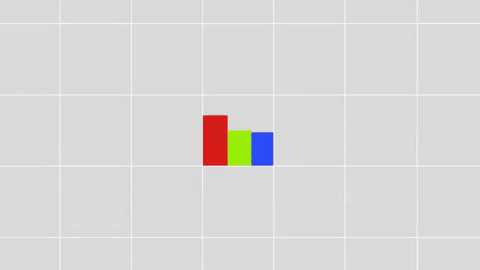
With the right technology, every pixel of light can also be measured as a spectrum.

Images show us the big picture, while a spectrum reveals finer details. Astronomers use spectra to learn things like what molecules are in planet atmospheres and distant galaxies.
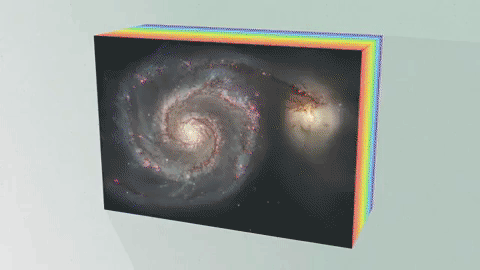
An Integral Field Unit, or IFU, is a special tool on the James Webb Space Telescope that captures images and spectra at the same time.
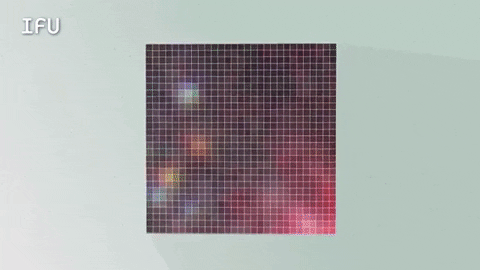
The IFU creates a unique spectrum for each pixel of the image the telescope is capturing, providing scientists with an enormous amount of valuable, detailed data. So, with an IFU we can get an image, many spectra and a better understanding of our universe.
Watch the full video where this method of learning about planetary atmospheres is explained:
The James Webb Space Telescope is our upcoming infrared space observatory, which will launch in 2021. It will spy the first galaxies that formed in the universe and shed light on how galaxies evolve, how stars and planetary systems are born and tell us about potentially habitable planets around other stars.
To learn more about NASA’s James Webb Space Telescope, visit the website, or follow the mission on Facebook, Twitter and Instagram.
Text and graphics credit: Space Telescope Science Institute
Make sure to follow us on Tumblr for your regular dose of space: http://nasa.tumblr.com.
Astronaut Journal Entry - Launch & Docking
Currently, six humans are living and working on the International Space Station, which orbits 250 miles above our planet at 17,500mph. Below you will find a real journal entry, written in space, by NASA astronaut Scott Tingle.
To read more entires from this series, visit our Space Blogs on Tumblr.

The launch went as planned. Our Soyuz spacecraft did a great job getting the three of us to the International Space Station (ISS).

A week later, it all seems like a blur. The bus driver played me a video of my family and friends delivering their good luck messages. After exiting the bus at the launch pad, I was fortunate to have the Soyuz chief designer (Roman) and NASA’s associate administrator for Human Exploration and Operations (Bill Gerstenmaier) walk me to the stairs and elevator that would take us to the top of the rocket for boarding. The temperature at the pad was approximately -17 degrees centigrade, and we were wearing the Russian Polar Bear suits over our spacesuits in order to stay warm. Walking in these suits is a little hard, and I was happy to have Roman and Bill helping me.

We walked into the fog created by the systems around the rocket, climbed the ladder, and waved goodbye. My last words before launch were to Bill, “Boiler Up!”. Bill is a fellow and very well-known Boilermaker. We strapped in, and the launch and docking were nominal. But I will add that the second stage cutoff and separation, and ignition of the third stage was very exciting. We were under approximately 4 Gs when the engine cutoff, which gave us a good jolt forward during the deceleration and then a good jolt back into the seat after the third stage ignited. I looked at Anton and we both began to giggle like school children.
We spent two days in orbit as our phase angle aligned with ISS. Surprisingly, I did not feel sick. I even got 4 hours of sleep the first night and nearly 6 hours the second night. Having not been able to use my diaper while sitting in the fetal position during launch, it was nice to get out of our seats and use the ACY (Russian toilet). Docking was amazing. I compared it to rendezvousing on a tanker in a fighter jet, except the rendezvous with ISS happened over a much larger distance. As a test pilot, it was very interesting to watch the vehicle capture and maintain the centerline of ISS’s MRM-1 docking port as well as capturing and maintaining the required speed profile.

Just like landing at the ship, I could feel the vehicle’s control system (thrusters) making smaller and faster corrections and recorrections. In the flight test world, this is where the “gains” increase rapidly and where any weaknesses in the control system will be exposed. It was amazing to see the huge solar arrays and tons of equipment go by my window during final approach. What an engineering marvel the ISS is. Smooth sailing right into the docking port we went!

About an hour later, after equalizing pressures between the station and Soyuz, we opened the hatch and greeted our friends already onboard. My first view of the inside of the space station looked pretty close to the simulators we have been training in for the last several years. My first words were, “Hey, what are you guys doing at Building 9?”. Then we tackled each other with celebratory hugs!

Find more ‘Captain’s Log’ entries HERE.
Follow NASA astronaut Scott Tingle on Instagram and Twitter.
Make sure to follow us on Tumblr for your regular dose of space: http://nasa.tumblr.com.

We’re sending people to space this week 🚀 Here’s your chance to ask a past Flight Director in Mission Control your questions!
Ginger Kerrick will be taking your questions in an Answer Time session on Friday, September 27 from 12pm - 1 pm ET here on NASA’s Tumblr! Ginger served as a Flight Director in Mission Control for 11 years and is now the Flight Integration Division Chief at Johnson Space Center. Find out what it’s like to send humans to space and learn more about her position as our first female Hispanic flight director. Make sure to ask your question now by visiting http://nasa.tumblr.com/ask!
Ginger Kerrick, as a child, dreamed of growing up to be either a basketball player or an astronaut. When neither dream came to fruition, Kerrick developed a fresh perspective – best summed up by the phrase “It just wasn’t meant to be” – and later became part of our team, serving in the Mission Control Center at the NASA Johnson Space Center as a Flight Director who has, to date, supported 13 International Space Station and five joint space shuttle missions. It was there that Kerrick, a few years earlier, became the first non-astronaut Capsule Communicator (CapCom), the flight controller that speaks directly to the astronaut crew in space, on behalf of the rest of the Mission Control team.
Today, Ginger Kerrick is the Flight Integration Division Chief at our Johnson Space Center. Her department is responsible for crew safety and training, among a list of other duties. She has worked for NASA since 1994, and interned here while she was earning a bachelor’s degree in physics from Texas Tech University. She also has a master’s degree in physics from the university.
Make sure to follow us on Tumblr for your regular dose of space: http://nasa.tumblr.com
Dreaming of going to space? – Astronaut Victor Glover has you covered.
In his first video from space, take a look at our home through the window of SpaceX’s Crew Dragon “Resilience” spacecraft. Victor arrived to the International Space Station alongside his fellow Crew-1 astronauts on Nov. 16, 2020.
This is his first trip to space and his first mission on the orbital lab!
Follow his Instagram account HERE to stay up-to-date on station life and for more behind-the-scenes content like this.
Make sure to follow us on Tumblr for your regular dose of space: http://nasa.tumblr.com.
What did the astronauts on the International Space Station see when they looked upon the Earth from orbit in 2017? See some of the top Earth observations from the year and download these pics, as chosen by our Earth Science and Remote Sensing Unit at the Johnson Space Center in Houston. Astronauts have used hand-held cameras to photograph the Earth for more than 55 years. Beginning with the Mercury missions in the early 1960s, astronauts have taken more than 1.5 million photographs of the Earth. Today, the International Space Station continues this tradition of Earth observation from human-tended spacecraft. Operational since November 2000, the space station is well suited for documenting Earth features. The orbiting laboratory maintains an altitude of about 250 miles above the Earth, providing an excellent stage for observing most populated areas of the world.
Make sure to follow us on Tumblr for your regular dose of space: http://nasa.tumblr.com.
Three Ways to Travel at (Nearly) the Speed of Light

One hundred years ago, Einstein’s theory of general relativity was supported by the results of a solar eclipse experiment. Even before that, Einstein had developed the theory of special relativity — a way of understanding how light travels through space.
Particles of light — photons — travel through a vacuum at a constant pace of more than 670 million miles per hour.

All across space, from black holes to our near-Earth environment, particles are being accelerated to incredible speeds — some even reaching 99.9% the speed of light! By studying these super fast particles, we can learn more about our galactic neighborhood.
Here are three ways particles can accelerate:
1) Electromagnetic Fields!
Electromagnetic fields are the same forces that keep magnets on your fridge! The two components — electric and magnetic fields — work together to whisk particles at super fast speeds throughout the universe. In the right conditions, electromagnetic fields can accelerate particles at near-light-speed.

We can harness electric fields to accelerate particles to similar speeds on Earth! Particle accelerators, like the Large Hadron Collider and Fermilab, use pulsed electromagnetic fields to smash together particles and produce collisions with immense amounts of energy. These experiments help scientists understand the Big Bang and how it shaped the universe!
2) Magnetic Explosions!

Magnetic fields are everywhere in space, encircling Earth and spanning the solar system. When these magnetic fields run into each other, they can become tangled. When the tension between the crossed lines becomes too great, the lines explosively snap and realign in a process known as magnetic reconnection. Scientists suspect this is one way that particles — for example, the solar wind, which is the constant stream of charged particles from the Sun — are sped up to super fast speeds.

When magnetic reconnection occurs on the side of Earth facing away from the Sun, the particles can be hurled into Earth’s upper atmosphere where they spark the auroras.
3) Wave-Particle Interactions!

Particles can be accelerated by interactions with electromagnetic waves, called wave-particle interactions. When electromagnetic waves collide, their fields can become compressed. Charged particles bounce back and forth between the waves, like a ball bouncing between two merging walls. These types of interactions are constantly occurring in near-Earth space and are responsible for damaging electronics on spacecraft and satellites in space.

Wave-particle interactions might also be responsible for accelerating some cosmic rays from outside our solar system. After a supernova explosion, a hot, dense shell of compressed gas called a blast wave is ejected away from the stellar core. Wave-particle interactions in these bubbles can launch high-energy cosmic rays at 99.6% the speed of light.
Make sure to follow us on Tumblr for your regular dose of space: http://nasa.tumblr.com.
Five Ways NASA’s Internships Rock(et)
Sending humans to space, returning to the Moon, transforming aircraft, exploring the extraordinary every day: just a few things you are a part of as a NASA intern. Whether you have dreamed of working at the agency your whole life, or discovered a new interest, students at NASA have the opportunity to make real contributions to space exploration and flight. Want to know more? Here are five ways these internships can be rocket fuel for your career:
5. NASA gives you a navigation system.

Imagine walking into a lab to work side-by-side with NASA scientists, engineers and researchers. As a NASA intern, that’s a daily reality. Mentors are full-time employees who guide and work with students throughout their internship. Space communications intern Nick Sia believes working with a mentor is what makes NASA’s internships different. “Working one-on-one has given me more opportunities to work on different projects,” he says. “It’s the best motivation to do great work.”
4. It’s more than training for launch day.

As a NASA intern, your work matters. Students are treated as employees, and their ideas are valued. Hands-on assignments allow interns to make real contributions to NASA research and gain experience. For example, Erin Rezich is working in our mobility lab to help design excavation hardware for planetary surfaces such as the Moon. “It’s an incredibly exciting project because these are problems that have to be solved to move planetary exploration forward,” she says.
3. Students develop an array of skills.

Not only do interns improve their technical skills, but they are also building communication and leadership skills. This summer, students are taking part in a two-week immersive design challenge. Participants will design a Ram Air Turbine for NASA Glenn’s 1x1 Supersonic Wind Tunnel. “This design challenge is a unique opportunity to create a design from scratch, which could actually be implemented,” says Woodrow Funk, an electrical testing engineer intern. Projects such as this allow students to work independently, plan, organize and improve time management skills.
2. Non-technical degrees shoot for the stars.

NASA also offers many opportunities for students pursuing a career outside of STEM fields. Departments such as human resources, administration, education and communications engage students with hands-on projects. These organizations provide support essential to NASA’s programs and missions. “I was excited that NASA offered opportunities that match my skill set,” says Molly Kearns, a digital media student working with Space Communications and Navigation. Kearns’ first summer at NASA confirmed her passion for graphic design. “What makes the experience so rewarding is seeing content that I created published on social media sites,” she says.
1. Students are surrounded by extraordinary peers.

Students come to NASA from all over the nation to develop important skills matched to their career goals and expand the way they think about their work. Being surrounded by the best scientists, developers, engineers, mathematicians and communicators is inspiring. NASA’s network is one of graduate fellow Jamesa Stokes’ main motivations. “There are tons of smart and awesome people who work here,” says Stokes, “At the end of the day, they are willing to help anyone who comes and asks for it.”
Are you ready to liftoff your career? Learn more about opportunities for students at NASA here.
Make sure to follow us on Tumblr for your regular dose of space: http://nasa.tumblr.com.
Celebrate #BlackHoleFriday with Nurturing Baby Stars

Are you throwing all your money into a black hole today?
Forget Black Friday — celebrate #BlackHoleFriday with us and get sucked into this recent discovery of a black hole that may have sparked star births across multiple galaxies.
If confirmed, this discovery would represent the widest reach ever seen for a black hole acting as a stellar kick-starter — enhancing star formation more than one million light-years away. (One light year is equal to 6 trillion miles.)
A black hole is an extremely dense object from which no light can escape. The black hole's immense gravity pulls in surrounding gas and dust. Sometimes, black holes hinder star birth. Sometimes — like perhaps in this case — they increase star birth.
Telescopes like our Chandra X-ray Observatory help us detect the X-rays produced by hot gas swirling around the black hole. Have more questions about black holes? Click here to learn more.
Make sure to follow us on Tumblr for your regular dose of space: http://nasa.tumblr.com.
-
 davebriggs007 reblogged this · 1 year ago
davebriggs007 reblogged this · 1 year ago -
 myaquehornsmalduc liked this · 1 year ago
myaquehornsmalduc liked this · 1 year ago -
 midorides-ka liked this · 3 years ago
midorides-ka liked this · 3 years ago -
 thinketh-me-do liked this · 4 years ago
thinketh-me-do liked this · 4 years ago -
 o-gay-one liked this · 4 years ago
o-gay-one liked this · 4 years ago -
 blog-for-beatrice liked this · 4 years ago
blog-for-beatrice liked this · 4 years ago -
 stinkerposts liked this · 4 years ago
stinkerposts liked this · 4 years ago -
 josiane-carvalho liked this · 4 years ago
josiane-carvalho liked this · 4 years ago -
 theburntpretzel liked this · 5 years ago
theburntpretzel liked this · 5 years ago -
 7c-heptagon liked this · 5 years ago
7c-heptagon liked this · 5 years ago -
 lethiepie liked this · 5 years ago
lethiepie liked this · 5 years ago
Explore the universe and discover our home planet with the official NASA Tumblr account
1K posts